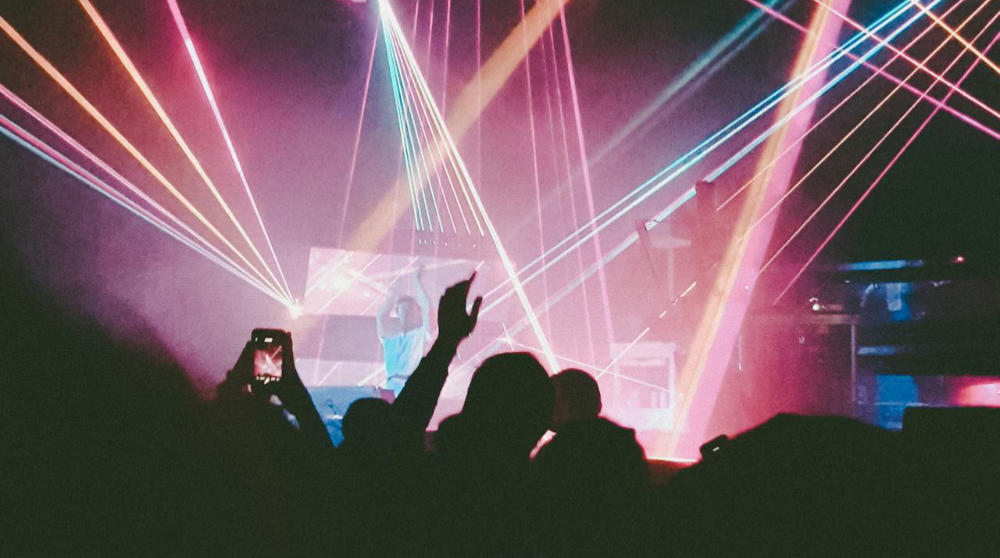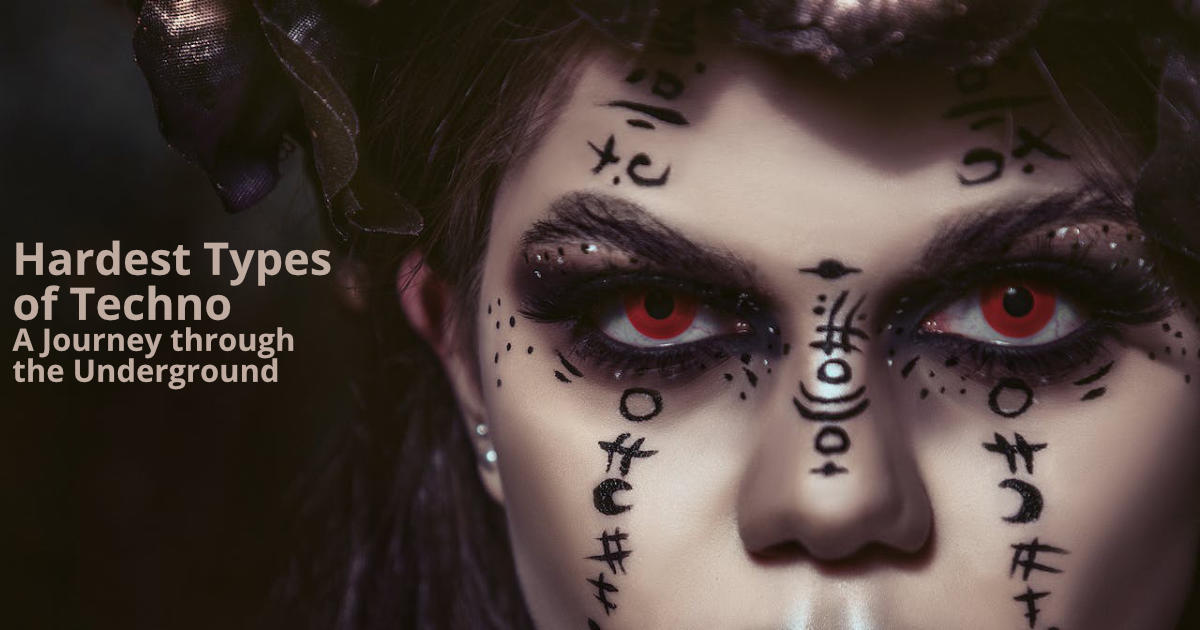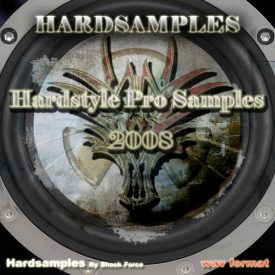Estimated reading time: 10 minutes
Techno music has always been at the forefront of the electronic music scene, with its pulsating beats and futuristic sounds captivating listeners around the globe. But within the world of techno, there exists a subset of genres that are known for their intense and harder styles. These genres push the boundaries of sound, creating a sonic experience like no other. In this article, we will take a deep dive into the hardest types of techno, exploring their evolution, the underground scenes that embrace them, and the notable artists who have shaped these genres.
Table of contents
- Evolution of Electronic Music Genres
- Exploring the Underground: Techno Scenes and Rave Culture
- Notable Artists and Pioneers in the Hardest Types of Techno
- Understanding the Different Subgenres: Hardcore Music, Acid House, Deep House, and More
- Subgenres of Hardcore Techno Music
- Exploring the Electronic Music Spectrum: From Ambient to Harder Styles
- The Influence of German Labels on the Hardest Types of Techno
- Unleashing the Power of Distorted Sound: Futuristic Sounds and Bass Scene
- The Role of Beats per Minute (BPM) in the Hardest Types of Techno
- Production and Sample Packs in the Hardest Types of Techno
- The Impact of Electronic Music on the House Scene
- Fashion and Outfits in the Hardest Types of Techno
- How to Immerse Yourself in the Underground: Clubs, Festivals, and Events
- Conclusion: Embracing the Diversity of Electronic Dance Music Genres
- FAQ
Evolution of Electronic Music Genres
To understand the hardest types of techno, it is essential to trace the evolution of electronic music genres. From its humble beginnings in the 1970s with artists like Kraftwerk and Cabaret Voltaire, electronic music has undergone a remarkable transformation. It has evolved from experimental sounds to the mainstream phenomenon we witness today. The pioneering work of artists like Juan Atkins, who is often credited as the “Godfather of Techno,” paved the way for the emergence of harder styles within the genre. As the technology advanced, so did the sound, giving birth to subgenres like hardcore music, acid house, deep house, and more.
Exploring the Underground: Techno Scenes and Rave Culture
The underground techno scenes have always been the breeding ground for innovation and creativity. These scenes encompass a variety of spaces, from dimly lit clubs to abandoned warehouses, where techno enthusiasts gather to immerse themselves in the music. The rave culture that emerged in the 1980s played a significant role in shaping the underground techno scene. Raves became a sanctuary for those seeking an escape from mainstream culture, where they could dance freely to the hypnotic beats of the hardest types of techno. These underground scenes fostered a sense of community and rebellion, creating a movement that continues to thrive to this day.
Notable Artists and Pioneers in the Hardest Types of Techno
The hardest types of techno owe their existence to the pioneering work of visionary artists who dared to push the boundaries of sound. Juan Atkins, as mentioned earlier, is one such artist who played a pivotal role in shaping the genre. His groundbreaking track “No UFOs” laid the foundation for the harder styles of techno that followed. Other notable artists include Jeff Mills, known for his relentless and hypnotic beats, and Robert Hood, who is hailed as the “Minister of Information” for his politically charged music. These artists, along with many others, have left an indelible mark on the hardest types of techno.
Understanding the Different Subgenres: Hardcore Music, Acid House, Deep House, and More
Within the realm of the hardest types of techno, several subgenres exist, each with its distinct characteristics and sound. Hardcore music, also known as Gabber, with its aggressive and fast-paced beats, is often associated with the underground rave scene. If you want to find out more about gabber, read our article about the question what is Gabber Music. Also worth mentioning is the hardstyle genre, which is a subgenre of hardcore. We also have more information for interested parties here. So be sure to read our article on the question of what is Hardstyle Music. Acid house, on the other hand, is known for its distinctive acid-like squelching sounds and infectious energy. Deep house, a subgenre that emerged in the 1980s, incorporates soulful vocals and melodic elements, creating a more introspective and emotional experience. These are just a few examples of the diverse range of subgenres that fall under the umbrella of the hardest types of techno.
| Subgenre | Description |
|---|---|
| Hardcore Music | Aggressive and fast-paced beats |
| Acid House | Distinctive acid-like squelching sounds |
| Deep House | Soulful vocals and melodic elements |
Subgenres of Hardcore Techno Music
And now let’s dive deeper into the hardest techno genres you will ever hear. Listen to tracks from the different subgenres of hardcore techno.
Exploring the Electronic Music Spectrum: From Ambient to Harder Styles
Electronic music encompasses a broad spectrum of genres, ranging from the soothing and atmospheric sounds of ambient music to the harder and more aggressive styles found in the hardest types of techno. Ambient music creates a sonic landscape that is perfect for relaxation and introspection, while the harder styles immerse listeners in a world of intense beats and distorted sound. The beauty of electronic music lies in its ability to cater to a wide range of emotions and moods, allowing listeners to explore different sonic landscapes and find their own unique connection to the music.
The Influence of German Labels on the Hardest Types of Techno
Germany has long been regarded as a hub for electronic music, and its influence on the hardest types of techno cannot be overstated. German labels such as Tresor, founded in 1991, have played a significant role in shaping the genre. Tresor became a mecca for techno enthusiasts, with its iconic underground club and record label releasing groundbreaking music that pushed the boundaries of sound. Other notable German labels include Kompakt and Ostgut Ton, both of which have contributed to the evolution and popularity of the hardest types of techno. The German techno scene continues to thrive, attracting artists from around the world and serving as a catalyst for innovation within the genre.
Unleashing the Power of Distorted Sound: Futuristic Sounds and Bass Scene
One of the defining features of the hardest types of techno is the use of distorted sound. This intentional manipulation of sound creates a futuristic and otherworldly experience for the listener. The bass scene, in particular, embraces this distorted sound, with artists pushing the limits of low-frequency vibrations to create a visceral and physical response. The combination of distorted sound and pulsating basslines creates an energy that is unparalleled, immersing the audience in a sonic journey that transcends the boundaries of conventional music.
- Unleashing the Speed: Exploring the Fastest Types of Techno Music
The Role of Beats per Minute (BPM) in the Hardest Types of Techno
Beats per minute (BPM) play a crucial role in the hardest types of techno. The BPM determines the speed and intensity of the music, setting the tone for the entire experience. Hardcore music, for example, is characterized by its high BPM, often exceeding 160 beats per minute. This fast-paced rhythm creates a sense of urgency and exhilaration on the dancefloor. On the other hand, deep house tends to have a slower BPM, allowing for a more relaxed and introspective experience. The choice of BPM is a powerful tool for artists, shaping the mood and energy of their music.
Production and Sample Packs in the Hardest Types of Techno
The creation of the hardest types of techno involves meticulous attention to sound design and production techniques. Sample packs play a pivotal role in shaping the sonic landscape of genres like hardstyle, gabber, and hardcore techno. These packs serve as a treasure trove of sounds, loops, and elements that producers use to craft their tracks.
Hardstyle Sample Packs offer an assortment of punchy kicks, distorted basslines, energetic synths, and impactful percussion loops. They often contain signature hardstyle screeches and euphoric melodies, essential for creating the genre’s dynamic and powerful atmosphere.
Gabber Sample Packs are renowned for their aggressive and relentless sounds. They provide distorted kicks, aggressive percussion, and high-energy loops that define the fast-paced and frenetic nature of gabber music. These packs cater to the demand for intense and driving elements synonymous with the gabber genre.
Hardcore Samples encompass a wide range of sonic elements, including distorted vocals, pounding drum loops, and gritty synth textures. These packs offer diverse sounds that are crucial in producing the relentless and high-energy tracks characteristic of hardcore techno.
Producers within these hardest techno genres rely on these sample packs as foundational tools to construct their tracks. While utilizing these packs, skilled producers infuse their creativity and production techniques, shaping the distinct characteristics that define each subgenre within the spectrum of the hardest types of techno.
-
Product on saleHardstyle Pro Samples – Hardstyle Sample Pack with fat Hardstyle Kicks [Digital]Original price was: 59,00 €.34,00 €Current price is: 34,00 €.Includes 19% VATDelivery Time: Instant download
-
Product on saleHardstyle Essentials – Hardstyle Kick Samples and Drums – Bass and Synths [Digital]Original price was: 39,00 €.19,00 €Current price is: 19,00 €.Includes 19% VATDelivery Time: Instant download
The Impact of Electronic Music on the House Scene
Electronic music, including the hardest types of techno, has had a profound impact on the house scene. House music, with its origins in the underground clubs of Chicago and New York, shares a symbiotic relationship with techno. The two genres have influenced and inspired each other, leading to the emergence of new sounds and subgenres. The fusion of house and techno has resulted in the creation of hybrid genres like tech house and electro house, which combine elements from both genres to create a unique and captivating sound. The influence of electronic music on the house scene continues to evolve, shaping the landscape of dance music as a whole.
Fashion and Outfits in the Hardest Types of Techno
Beyond just the music, the hardest types of techno often cultivate a unique fashion culture that resonates with the energy and vibe of the music itself. Enthusiasts of hardstyle and gabber music often express their passion through their outfits.
Hardstyle T Shirts have become iconic symbols within the hardstyle community. These shirts often feature bold graphics, striking logos, and vibrant colors that reflect the energetic and dynamic nature of the genre. They’re more than just clothing; they serve as a statement of allegiance to the hardstyle movement.
Gabber Outfits are known for their raw, street-inspired aesthetics. Combining elements like oversized hoodies, track pants, and striking sneakers, gabber enthusiasts often opt for outfits that mirror the high-energy, fast-paced essence of the music. Utilizing bold colors and functional streetwear, these outfits resonate with the intense vibe of gabber music culture.
For enthusiasts of these hardest techno genres, clothing isn’t merely about fashion; it’s a form of self-expression and a way to visually connect with the music and the community. The clothing and outfits within these subcultures serve as a visual representation of the passion and dedication of the fans.
How to Immerse Yourself in the Underground: Clubs, Festivals, and Events

To truly experience the power of the hardest types of techno, one must immerse themselves in the underground scene. Clubs, festivals, and events dedicated to techno provide the perfect environment to connect with like-minded individuals and lose yourself in the music. Clubs such as Berghain in Berlin and Tresor in Detroit are renowned for their immersive and electrifying techno experiences. Festivals like Awakenings in the Netherlands and Movement in Detroit attract thousands of techno enthusiasts from all corners of the globe. Attending these events allows you to witness firsthand the diversity and energy of the underground techno scene, forging memories that will last a lifetime.
- Types of Electronic Music: Discovering the Fascinating Genres within Electronic Music
Conclusion: Embracing the Diversity of Electronic Dance Music Genres
The hardest types of techno represent a small but significant portion of the vast and diverse world of electronic dance music genres. From the aggressive beats of hardcore music to the melodic elements of deep house, each subgenre offers a unique sonic experience. Embracing this diversity allows us to explore different facets of our own musical tastes and connect with a global community of techno enthusiasts. So, whether you find solace in the ambient sounds of dub music or lose yourself in the pulsating rhythms of the hardest types of techno, remember to embrace the power of electronic music and let it take you on a journey through the underground.
FAQ
The hardest types of techno encompass subgenres like hardcore music, acid house, deep house, and more. These genres are known for their intense beats and futuristic sounds.
Juan Atkins, Jeff Mills, and Robert Hood are just a few notable artists who have made significant contributions to the hardest types of techno.
Beats per minute (BPM) determine the speed and intensity of the music. Different subgenres within techno have varying BPM ranges, which shape the mood and energy of the music.
Electronic music, including the hardest types of techno, has had a profound impact on the house scene. The fusion of house and techno has led to the emergence of new sounds and hybrid genres.
To immerse yourself in the underground techno scene, attend clubs, festivals, and events dedicated to the genre. These provide opportunities to connect with like-minded individuals and experience the power of techno firsthand.


